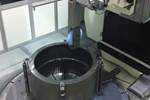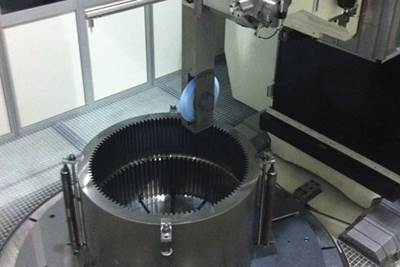Gear Making in Transition
As I prepared to write about InvoMilling for the article starting on page 17, I spoke with several production managers at companies that were on the verge of implementing this process on their multitasking machines.
As I prepared to write about InvoMilling for the article starting on page 17, I spoke with several production managers at companies that were on the verge of implementing this process on their multitasking machines. One executive, in particular, could explain how this technology was about to transform not only his company’s gear-making operations, but also his business model. He is Brandon Anderson, president of Von Ruden Manufacturing in Buffalo, Minnesota. Von Ruden is a family-owned company with 46 employees. The company has three main product lines: hydraulic motors and systems, mechanical power transmisions and driven tools for machine tool turrets. All three lines face strong competition with products from bigger, richer companies.
“Our edge is expertise in gear design and production,” Brandon explained. “We believe our products are better because the gears inside are better. We have to make gears that run faster, last longer, take heavier loads, transmit power more efficiently and get to market quicker. And we have to do this profitably producing 350 different gear types, totaling about 11,000 pieces a year.”
His strategy hinges on the flexibility and versatility of gear making processes that do not depend on custom-sized tooling or dedicated, single-purpose machine tools. “We need technology that helps us apply our expertise to every gear made in our shop,” Brandon told me. “For example, some of our customers run a Von Ruden product at 6,000 rpm; others at 16,000 rpm. We know that certain subtle differences in the gears, such as the pattern of contact between meshing teeth, can optimize performance at a specific speed range, even though all of the gears meet the same specs otherwise.”
He explained that processes like InvoMilling or five-axis gear milling with an end mill enable his shop to adjust the tool path to generate the optimized gear profiles that contribute to superior product performance. “These processes leverage our know-how, and translate it into machining results,” Brandon said.
However, he added that multitasking capability is also a critical enabler. “It’s not just that these machines can do the complex multi-axis moves needed, but it’s also that they lend themselves to running for long stretches without an operator. Our manual gear cutting machines might give us faster cycle times, but setup time can take hours. The right-sized tool has to be available, and the operator has to be there.” Brandon has two NT machines from DMG/Mori Seiki on his floor now, and two more on order. He expects 60 to 80 percent of his gear production to be covered by InvoMilling and five-axis gear milling in 4 to 6 months. “We’ve already proven that we can create and cut a new gear in the same day on these machines,” Brandon said.
What does this mean for his business? Brandon gave me four “transformations” he expects:
- A bigger thrust into specialty drive systems. (“The challenges and the margins are attractive.”)
- Expanded support for legacy products. (“We can produce gears for drives built 30 or 40 years ago. All we need is the print.”)
- Adding contract gear production. (“We’ll have capacity for job shop work if we want it.”)
- Possible new product lines. (“More diversity is good for a company our size.”)
For Von Ruden, it’s clearly a great time to be in the gear-making business.
Read Next
Gearing Up to Make Big Gears
Over the years, this Indiana job shop/contract manufacturer developed a specialty in gear making. Now it is taking this specialty to a grander scale. Two large machines for high-precision internal gear grinding are the main anchors of the company’s new precision grinding room.
Read More3 Mistakes That Cause CNC Programs to Fail
Despite enhancements to manufacturing technology, there are still issues today that can cause programs to fail. These failures can cause lost time, scrapped parts, damaged machines and even injured operators.
Read More










.png;maxWidth=300;quality=90)





.png;maxWidth=300;quality=90)



